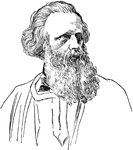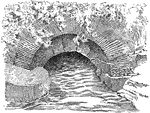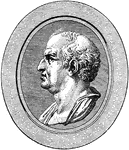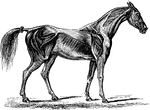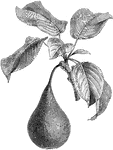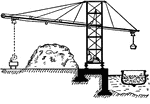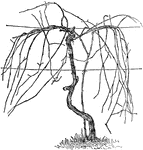
Unpruned Vine According to the Umbrella System
A diagram depicting an unpruned vine trained according to the umbrella system. This image shows stem…
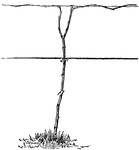
Pruned System According to the Umbrella System
An image depicting a pruned vine that was trained according to the umbrella system. This system is also…

Roman Boy
"The two chief avenues that were open to advancement were the political and the military. He must be…
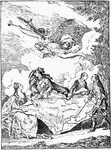
The Partition of Poland
"A contemporary cartoon which represents Catherine II, Joseph II, and Frederick II pointing out on the…
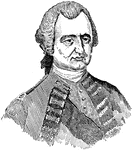
Robert Clive
Lord Clive was a British officer who established the military and political supremacy of the East India…
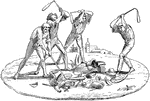
The Destruction of Feudalism
"A contemporary cartoon representing the French people hammering to pieces with their flails all the…

The Right Leg in the Boot at Last
"A cartoon which appeared in the English journal Punch for November 17, 1860."—Webster, 1920

Væ Victis!
William I, in the garb of an ancient Germanic chieftain, rides his charger over the body of prostate…
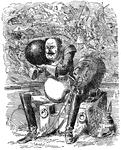
What Nicholas Heard in the Shell
"A cartoon by Sir John Tenniel which appeared in the English journal Punch for June 10, 1854. The tsar…

The Lion's Vengeance on the Bengal Tiger
"A cartoon by Sir John Tenniel which appeared in the English journal Punch for August 22, 1857."—Webster,…
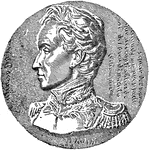
Simón Bolívar
A Venezuelan military and political leader. He helped lead Bolivia, Colombia, Ecuador, Panama, Peru,…
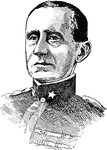
Guglielmo Marconi
An Italian inventor who is best known for his development of a radio telegraph system.

Dropping the Pilot
"A cartoon by Sir John Tenniel which appeared in the English journal Punch for March 9, 1890."—Webster,…

The Last Crusade
"Richard I (looking down on the Holy City): 'My dream comes true.' A cartoon which appeared in Punch,…
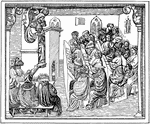
University Audience in the Fifteenth Century
"Student life in the earlier university period, before the dormitory and college system was introduced,…
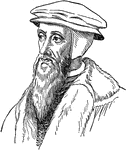
John Calvin
A French pastor during the Protestant Reformation, who helped develop the system of Christian theology…

Pompey
Also known as Gnaeus Pompeius Magnus. He was a military and political leader of the Roman Republic.

Pompey the Great
Also known as Gnaeus Pompeius Magnus. He was a military and political leader of the late Roman Republic.

Skeleton of the Deer
"The bones in the extremities of this the fleetest of quadrupeds are inclined very obliquely towards…
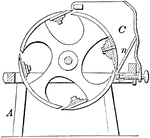
Grooved Pulleys
These pulleys are grooved such as to guide the inner belt, in this system there is less of a chance…
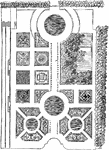
Ground Plan of the Tuileries Garden, Time of Louis XIII
This is the garden plan of the Tuileries Garden in the time of Louis XIII in France. This was the garden…

Horizontal System of Training Pear Trees
In a horizontal system of training pear trees the lower branches must be equally vigorous with the upper…

Trolly Station
A diagram of the inner workings of a trolly station. This diagram shows how trollies used to start when…
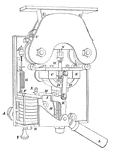
Circuit Breaker
A circuit breaker like the ones found on a railway switchboard. Circuit breakers are used to switch…
Electrolysis
How electrolysis may occur in a trolley system. TT is the trolley wire, RR is the track. As shown by…

Lever System
An air-brake system that was in use in the early twentieth century on trolleys. This model was recommended…

Electric Brake
The general arrangement of a Westinghouse electric brake commonly used in trolleys at the turn of the…

Fowl Digestion
The digestive system of a fowl. 1 is the tongue, 3 is the crop, 6 is the gizzard, 10 is the small intestine,…

Human Lungs
Human lungs. 1 and 2 make up the larynx, or voice box. 1 is thyroid cartilage, 2 is cricoid cartilage.…
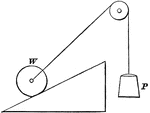
Simple Machine
An inclined plane with an inverted pulley system. No rule can be given for the ratio of power to weight.…

Isothermal Expansion
Isothermal expansion is a change in a system with a constant temperature. This occurs when: A. Said…

Copper Silicate Showing Rhombohedral Tetartohedrism In the Hexagonal System
This is a crystal of Copper Silicate (Dioptase) with a rhombohedron of the third order, (s), in combination…

Isometric Holohedral Mirror
This image represents an isometric holohedral mirror positioned to produce a cube by reflection.

Zircon (Twinning)
In the tetragonal system, the unit pyramid of the second order is the most common twinning plane. This…

Cerussite
In the orthorhombic system, tabular crystals of lead carbonite (cerussite), bounded by the forms ∞P∞̆,…
![This figure represents a crystal of iron pyrite showing representatives of all the forms of the isometric system except the rhombic dodecahedron: ∞O∞ {100} (P); O, {111} (d); [∞O2/2], π{102} (e); [4O2/2], π{214} (s); 2O2, {211} (o); and 3O, {133} (t). It is shortened in the direction of one of the principal axes, which, together with the fact that only two of the three faces belonging to the forms s, o, and t are developed in each octant, gives to it a decidedly orthorhombic habit.](https://etc.usf.edu/clipart/86800/86858/86858_crystal-of-iron-pyrite-showing-representatives_mth.gif)
Crystal of Iron Pyrite Showing Representatives of All the Forms of the Isometric System
This figure represents a crystal of iron pyrite showing representatives of all the forms of the isometric…
Nerve Ganglia (Spinal)
Nerve Ganglia, or Knots (sing. Ganglion; Knot) occur as collections of nerve cells on the course of…

Glove of Oliver Cromwell
This illustration shows the glove of Oliver Cromwell, a 17th century English military and political…

Section of Human Kidney
This illustration shows a section of a human kidney (A, Cortical substance; B, Pyramids; C, Hilum; D,…

Axes Shift
Any system of coordinate axes to another set which is parallel to the former, but with different origins.

Metric and English Systems Compared
Metric and English systems compared. 25 mm and 1 inch on respective rulers.

Spheres of the Ptolemaic System
A diagram showing the order of the universe as expounded by Ptolemy. Its basic concept surmises that…

Collection of Sewer Cross-Sections
"A conduit or canal constructed, especially in a town or city, to carry off superfluous, water, soil,…

Shafting
"In machinery, the system of shafts which connects machinery with the prime mover, and through which…

Pulleys - Smeaton's Blocks
"A system of pulleys in two blocks, so arranged that the parts of continuous rope are approximately…
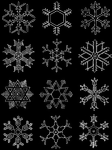
Snowflakes as Described by William Scoresby
"The aqueous vapor of the atmosphere precipitated in a crystalline form, and falling to the earth in…

